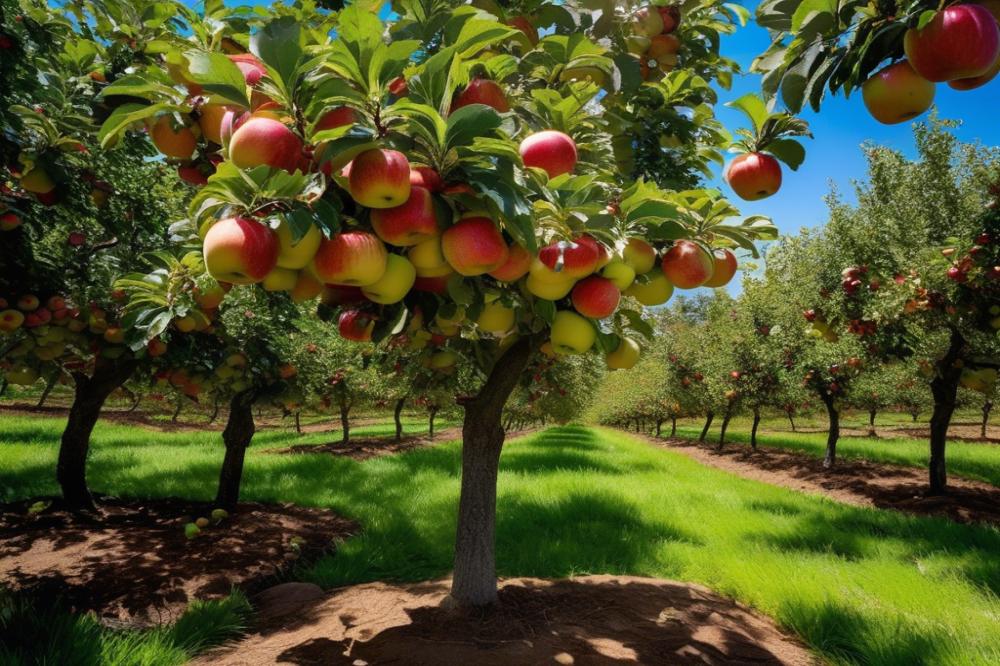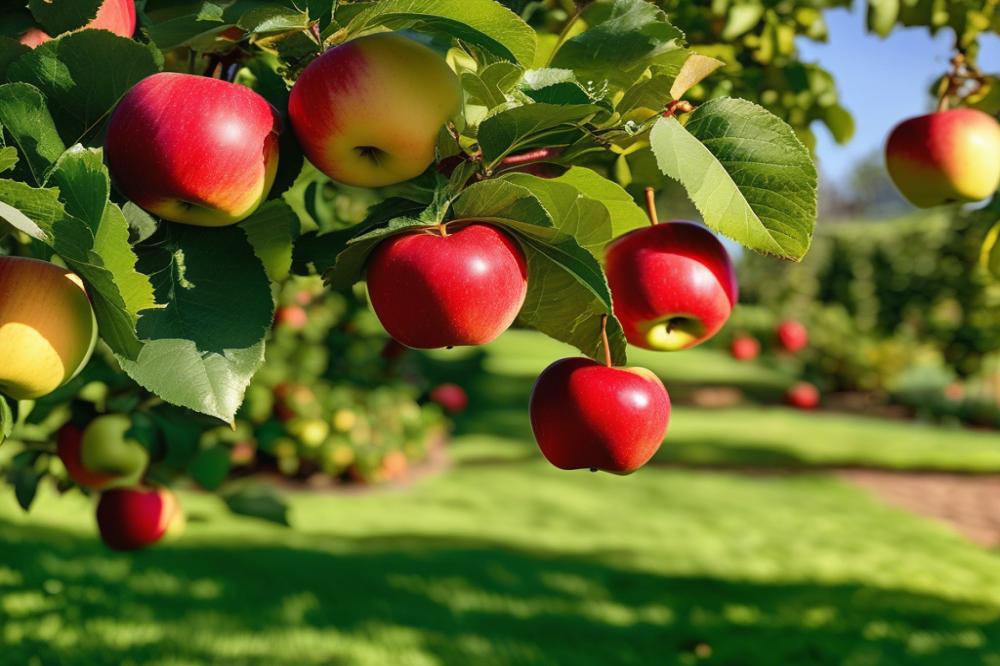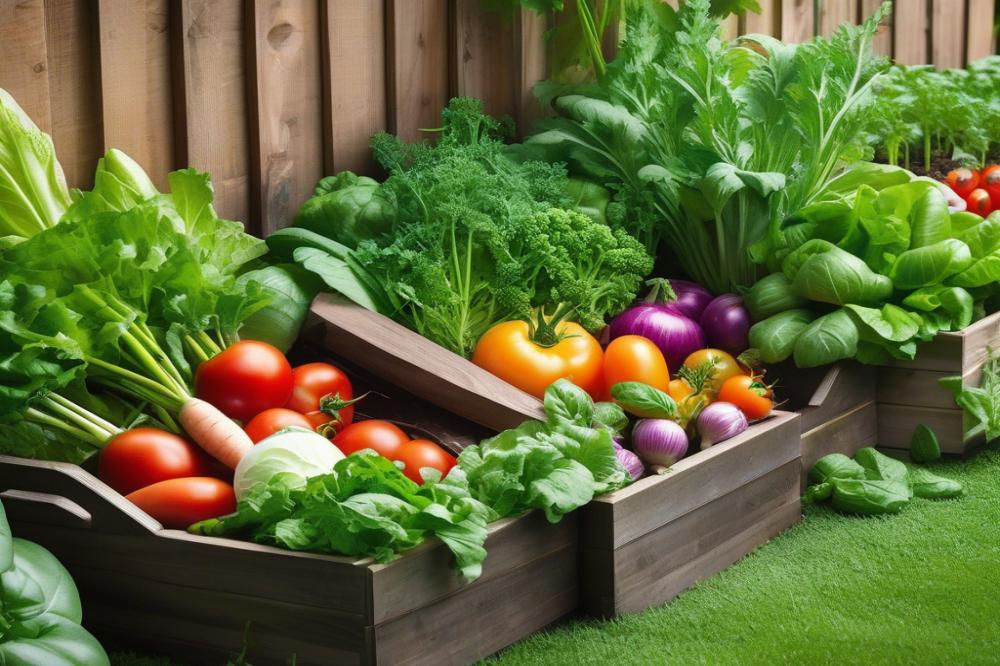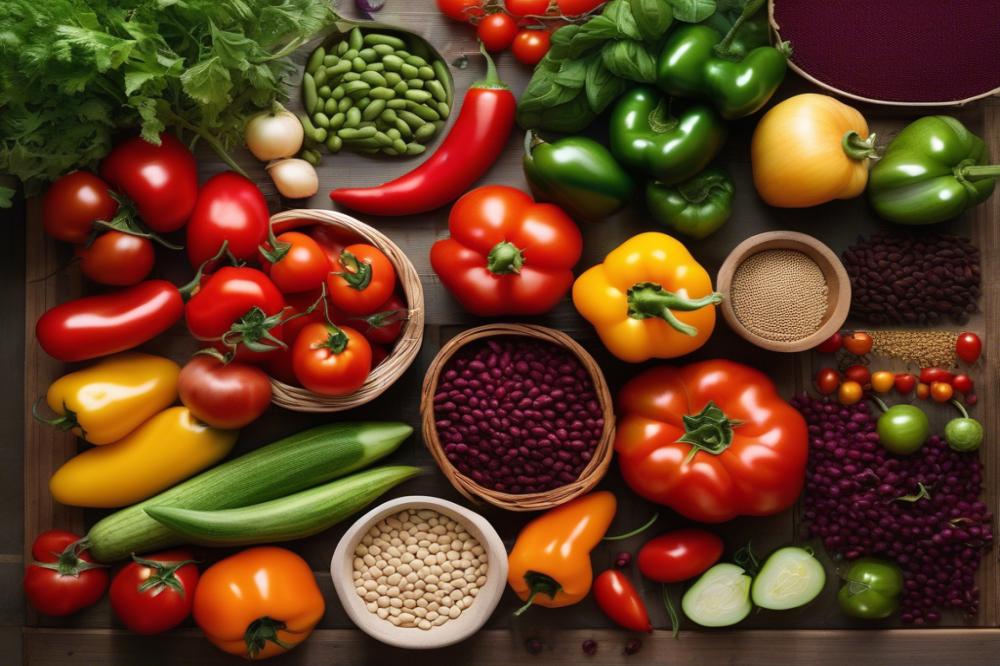The crisp texture of Jazz Apples: Cultivation Tips
Jazz Apples are known for their crisp texture and sweet flavor, making them a favorite among apple lovers. These appealing qualities are not only delicious but also contribute to their rising popularity in supermarkets and local markets alike. Consumers increasingly seek out this variety, reflecting a growing market demand that any aspiring gardener should consider.
Growing apples in a home garden can bring immense joy and satisfaction. With the right approach, individuals can enjoy the fruits of their labor. Proper attention to soil quality, climate conditions, and various apple varieties is vital for successful apple cultivation. Each choice in the garden plays a crucial role in the overall outcome of the harvest.
Those interested in organic farming will find Jazz Apples to be an excellent option. Employing effective pest management is important for maintaining healthy trees and fruit. Gardeners often engage in pruning techniques to shape their trees and encourage better fruit production. After all, a little care can lead to a bountiful harvest time.
As more people turn to gardening, the desire for fresh, flavorful produce grows. Finding joy in nurturing a garden can produce rewards that go beyond just the harvest. As demands for unique flavors like Jazz Apples rise, so does the opportunity for home growers to thrive.
Understanding Jazz Apples

Jazz Apples are known for their remarkable crisp texture and delightful sweet flavor. These features make them a favorite among many consumers. Shoppers often seek out this variety for snacking and culinary uses. Their crunch resonates with people who prefer a satisfying bite in their fruit.
These apples trace their origins back to New Zealand. Developed in the 1980s, they are a cross between the popular Gala and Braeburn varieties. Growers aimed to create an apple that combined the best traits of both parents. This unique breeding has resulted in a fruit that not only tastes great but also holds up well during transport.
Appealing to consumers has been a significant factor in their rise. Shoppers appreciate the consistent quality and flavor profile. The crisp texture enhances eating experiences, making them popular for salads and desserts. Additionally, market demand for high-quality apples has spurred increased interest among growers.
Farming techniques play an essential role in cultivating these apples. Many growers prioritize organic farming to meet consumer preferences. Integrated pest management is vital for keeping trees healthy without relying solely on chemicals. Effective pruning techniques can improve air circulation and sunlight exposure, which are crucial for strong fruit growth.
Harvest time is another key consideration. Picking occurs when the apples reach optimal ripeness, which varies depending on the region. Soil quality also influences the final product. Healthy soil promotes robust tree growth and can enhance flavor. Likewise, climate conditions such as temperature and rainfall are significant factors. Growers must monitor these elements closely to produce the best quality apples.
In summary, the characteristics of this apple variety stem from thoughtful cultivation strategies. Finding the right balance of soil, climate, and farming techniques can lead to a successful harvest. As the demand for high-quality apple varieties increases, Jazz Apples are likely to maintain their appeal in markets.
Preparing for Cultivation

Growing Jazz Apples can be a rewarding venture for home gardeners. Before getting started, it is essential to prepare your garden properly. Begin by focusing on soil quality. This particular fruit tree thrives in well-drained, loamy soil rich in organic matter.
Optimal pH levels for apple trees range between 6.0 and 7.0. Testing your soil beforehand will help you ascertain its current state. Amending soil with compost can enhance its nutrient content. Nutritional needs include nitrogen, phosphorus, and potassium, which are crucial for healthy apple production. A soil test will also guide you on specific fertilizers.
Site Selection
Selecting the right site plays a critical role. Climate conditions must be suitable for successful fruiting. Jazz Apples require full sunlight, ideally receiving at least six hours of direct sunlight each day. This will promote strong growth and enhance their crisp texture and sweet flavor.
In cooler climates, ensure that trees are planted in locations that provide some protection against harsh winds. Air circulation remains important, but too much exposure can lead to damage. Additionally, consider drainage. Waterlogged roots can harm any apple tree, so choose elevated areas if possible.
Organic Farming Considerations
For those interested in organic farming, it’s important to follow sustainable practices. Use natural pest management techniques to deter common pests like aphids and apple maggots. Introducing beneficial insects can help maintain a healthy ecosystem without harmful chemicals.
Pruning techniques must not be overlooked either. Regular pruning promotes air circulation and sunlight penetration. It also encourages more productive blooms, increasing the potential for higher yields during harvest time.
Finally, keep in mind market demand for different apple varieties. Understanding what consumers want can influence your decisions on planting and care. This awareness can ensure a successful harvest in the long run.
Planting Techniques

Successful planting of apples begins with careful timing. Late winter to early spring is usually the best time to plant. Soil should be worked and ready a few weeks before planting. Ideal conditions will make a significant difference in fruit quality.
Spacing matters a lot when planting. Trees generally require at least 15 to 20 feet between each other. This provides ample room for air circulation and sunlight. Without enough space, trees will fight for nutrients, affecting growth and overall health.
Depth is another critical factor. Holes should be deep enough to accommodate roots without bending them. A standard guideline is to plant the base of the tree at soil level. Roots should spread out comfortably, which promotes strong growth.
Choosing healthy apple varieties is essential for a fruitful harvest time. Look for stock that shows vibrant leaves and sturdy branches. A little research into various apple types can guide you toward the most suitable options for local climate conditions and market demand.
Rootstock selection directly influences the growth and productivity of apple trees. Different rootstocks vary in vigor, size, and disease resistance. Dwarf rootstocks, for instance, yield smaller trees that are easy to manage. In contrast, standard rootstocks can produce larger trees that may require more space.
Considerations for soil quality are paramount in organic farming practices. The soil needs to be well-draining and rich in nutrients. Conducting a soil test can help identify deficiencies and allow for precise amendments. Healthy soil contributes to robust root systems and ultimately impacts the crisp texture and sweet flavor of the fruit.
Effective pest management should begin before planting. Choosing resistant varieties can save future headaches. Regular monitoring of trees can help catch problems early. Integrated pest management techniques can also be beneficial in maintaining tree health.
Proper pruning techniques should not be overlooked. Removing dead or overcrowded branches encourages better air circulation. This facilitates sunlight penetration while promoting stronger branches capable of supporting heavy fruit loads. Regular pruning also fosters better overall shape and productivity.
Organic Farming Practices
Growing Jazz Apples can be a rewarding experience, especially when using organic farming techniques. These methods focus on nurturing both the trees and the environment. Cultivation starts with selecting the right apple varieties suited to your climate conditions. Research indicates that proper variety selection helps ensure a good harvest time and enhances the crisp texture of the fruit.
Soil quality plays a significant role in the success of any organic orchard. Testing soil before planting is crucial. This helps in understanding nutrient levels and pH balance. Adding organic matter, such as compost, enriches the soil and supports healthy root systems. Healthier trees tend to produce apples with a sweeter flavor.
Pest Management Strategies
Natural pest management strategies can protect your apple trees without harming the ecosystem. One effective technique is to plant companion crops. These plants can attract beneficial insects that prey on common pests. For instance, marigolds or other flowering plants can create habitats for ladybugs and lacewings.
Monitoring for pests is key. Regular inspections help catch issues early. If pests are found, organic options, like neem oil or insecticidal soap, can be effective. Hand-picking larger pests can also mitigate damage. This proactive approach lowers the need for synthetic pesticides, preserving the natural balance.
Pruning Techniques
Pruning techniques are essential for maintaining tree health and maximizing fruit quality. Properly pruning helps improve air circulation and light penetration. This can lead to a better distribution of nutrients and moisture within the tree. Timing your pruning is also important; late winter or early spring is often ideal.
Maintaining tree vigor contributes to the production of apples that have outstanding texture and flavor. A balanced approach to pruning encourages healthy growth and can lead to a more abundant harvest. When trees are well-cared for, they respond by producing apples that meet market demand.
Farming organically does not just protect apples from pests. It enhances the overall quality of the fruit. Sustainable practices not only benefit the environment but also yield apples with unique characteristics. The combination of careful cultivation and organic principles brings forth a bountiful crop.
Pruning Techniques
Effective pruning is essential for growing high-quality apples. Using proper techniques can significantly improve both fruit quality and tree health. Jazz apples are known for their crisp texture and sweet flavor. Following a few guidelines can make a real difference in your orchard.
Timing is crucial when it comes to pruning. Early spring is often the best time to start. Pruning too late can harm the tree and affect the harvest time. Removing dead or diseased branches helps prevent pests from invading. This also promotes better air circulation, which is vital for maintaining soil quality.
When pruning, focus on the tree’s structure. Aim for an open center. This encourages light to reach all parts of the tree. By doing so, every branch can produce fruit efficiently. Cut back branches that are crossed or crowded. Such branches compete for nutrients and space.
Optimal pruning techniques often involve cutting just above a bud. This allows new growth to flourish. Skilled handlers can create a balanced shape. A well-shaped tree not only looks good but also responds well to climate conditions. Trees that are managed properly tend to be more resistant to pests, lowering the need for pesticide use in organic farming.
Consider the tree’s age when deciding how much to prune. Younger trees need more shaping, while older ones require maintenance. The idea is to maintain a productive and manageable size. With the right approach, even older apple varieties can produce fruit abundantly.
A good rule to remember is to prune conservatively. Over-pruning can weaken the tree and lead to a lower yield. Trees that are healthy and well-tended can meet the market demand for quality apples. This requires a keen eye and a commitment to ongoing care.
Harvesting Jazz Apples
Timing is crucial when it comes to harvesting apples. Knowing the right harvest time can make a significant difference. The optimal moment arrives when the fruit displays a rich color and the flesh feels firm to the touch. A crisp texture and sweet flavor become prominent at this stage. Look for a vibrant red hue with hints of yellow on the fruit’s skin. This color indicates the apple is ripe and ready for picking.
To determine ripeness, check the seed color. If the seeds inside are brown rather than white, the apple is likely ready to be harvested. Taste-testing can also be useful. Snag a few samples to gauge sweetness and crispness. Remember, apples continue to ripen off the tree, so proper timing is essential for the best flavor and texture.
Soil quality plays a role in the tree’s health and fruit quality. Ensuring your apples grow in well-drained, nutrient-rich soil sets the foundation for a successful harvest. Organic farming practices can improve soil health and contribute to superior fruit quality. Adequate climate conditions during the growing season also affect when you should harvest. Areas with good sunlight and moderate temperatures usually yield the best apples.
After harvesting, storage methods greatly impact quality. Store the apples in a cool, dry place to maintain their crispness. Ideally, the temperature should stay around 30-35°F with humidity levels around 90%. An apples’ quality can diminish quickly in a warmer environment. For long-term storage, consider using a controlled atmosphere storage option.
Pest management is another critical aspect. Properly managing pests throughout the growing season can lead to better fruit quality come harvest time. This proactive approach helps ensure your apples remain free from blemishes or damage that could affect their texture and taste.
Applying effective pruning techniques can also influence harvest size and quality. Trimming the tree branches allows sunlight to penetrate better and air to circulate, which benefits the overall health of the apples. As the harvest approaches, being attentive to market demand can also impact your main objectives. If there’s a high demand for fresh apples in your area, be prepared to harvest accordingly.
Final Thoughts on Cultivating Crisp Apples
Growing apples in your garden can be a rewarding experience. The journey to successful cultivation begins with understanding the needs of the tree. Proper soil conditions and a sunny location are critical for producing fruit that has a delicious sweet flavor. Keep in mind that regular pruning will help maintain the tree’s shape and promote better air circulation.
Watering plays a vital role too. Consistent moisture is key, especially during the growing season. Avoid overwatering, as this can lead to root problems. Monitoring the tree for pests and diseases will also be important. A proactive approach will protect against issues that could affect the crisp texture of your apples.
Harvesting at the right time is essential for achieving the best quality fruit. Pick apples when they are fully colored and slightly firm to the touch. This ensures a delightful crunch that everyone will enjoy.
Utilizing these strategies will enhance your gardening experience. With patience and diligence, you’ll be able to enjoy the fruits of your labor. So, why not dive into apple-growing? You may find that your garden thrives with these delicious additions. Happy gardening!



